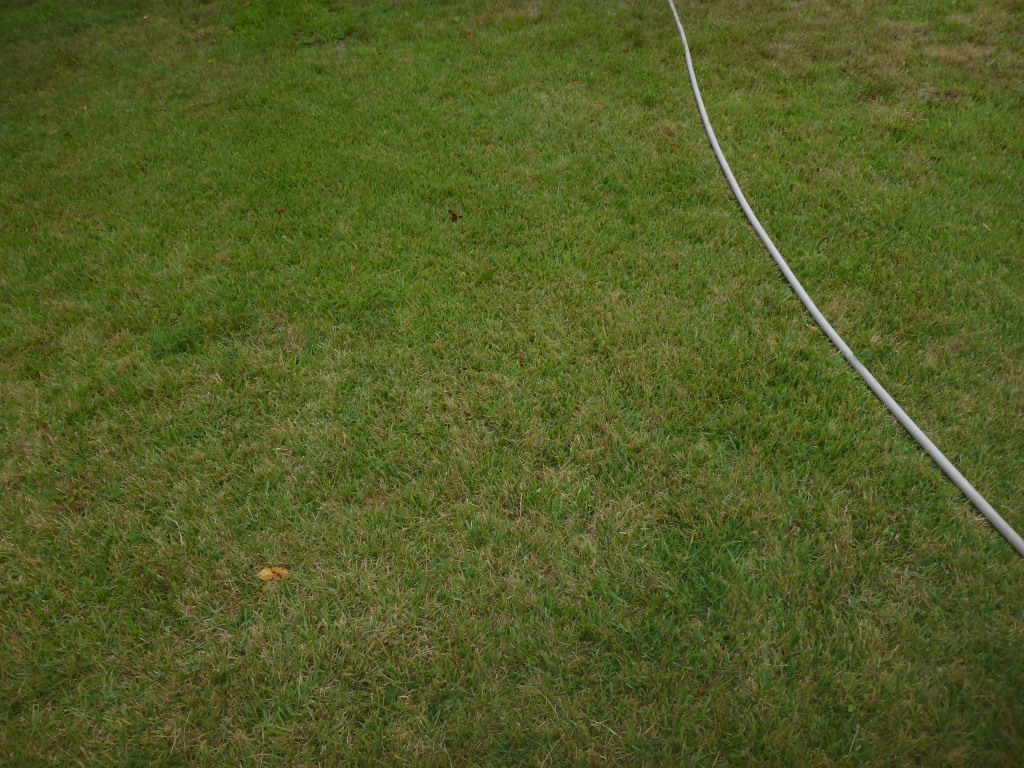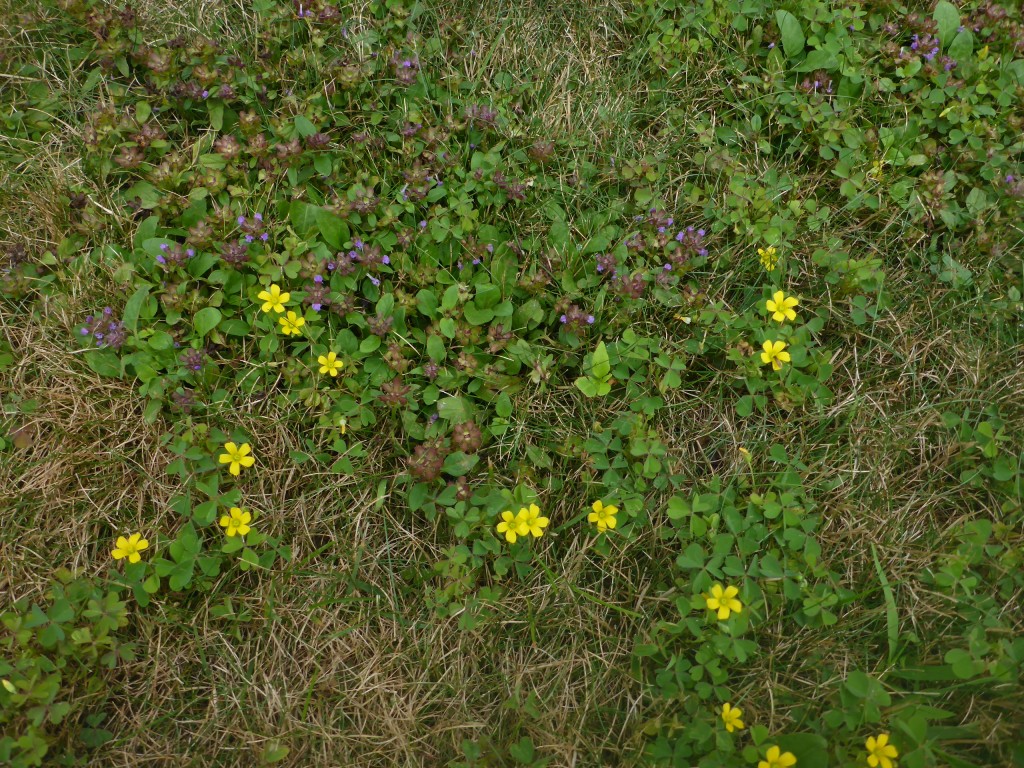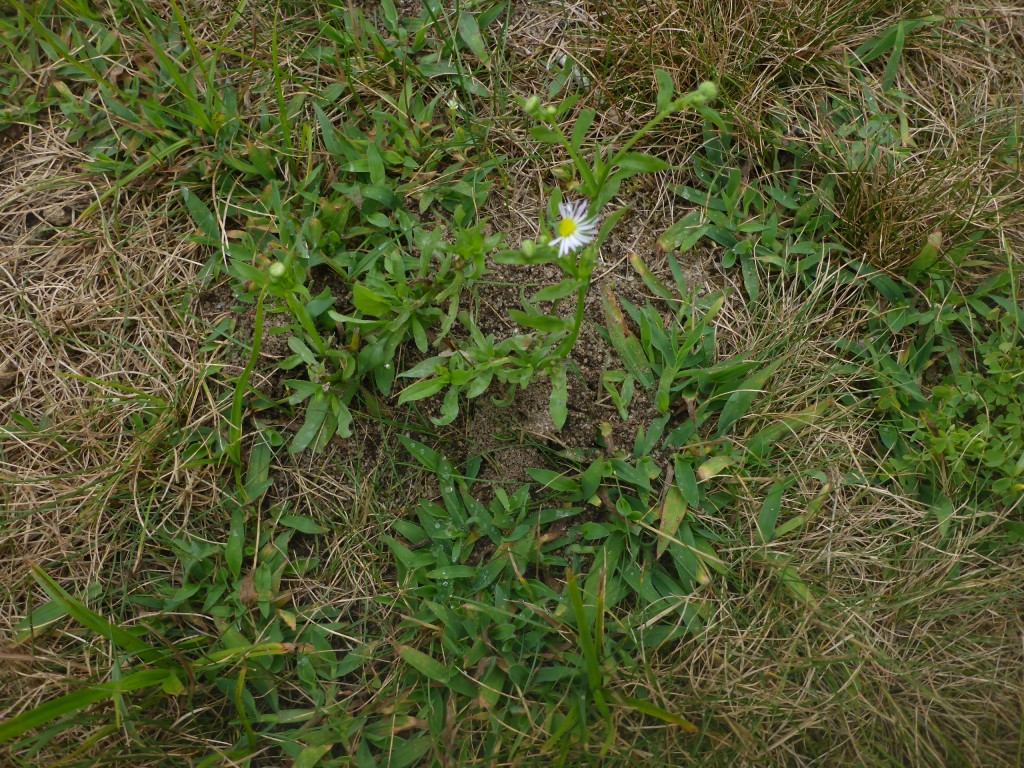For many years we bought into the idea of the “American Lawn” – a monoculture of smooth green grass. We were never fanatics, but we would hire the people that came around with their trucks for multiple treatments per year and we would drag hoses around to water. And for 15 years the lawn looked pretty good.

As I began to get more environmentally conscious, we switched to organic treatments and less watering. When we had grub problems, we used nematodes instead of chemicals. The lawn still looked okay but it was more work because at that time we had to apply the organic treatments ourselves.

Eventually, about 10-15 years ago, we stopped even that, and our lawn has gradually reverted to what is called a “Cape Cod lawn” – no treatments, no watering (except overspill from watering the garden beds), kind of scruffy and brown in the summer, but green from fall to spring. We have it mowed to 3” and have the clippings left on the lawn.
Interesting things have happened to the lawn over time, starting with the disappearance of much of the broad-leaf grasses (such as bluegrass). It has turned into a tapestry of multiple plants, and what has happened has varied based on the specific micro-conditions around the yard. For instance, in the shady areas the original lawn still looks good with the same no-maintenance care the rest of the lawn gets.

The grass that has persisted is mostly the thin-leaf fescue, which is not as lush looking but makes a nice green look from fall through to spring while going dormant in the heat and drought of the summer.

In one full-sun spot, a non-native warm-weather grass has taken over and is spreading. It’s quite brown in the winter, but for the rest of the year it looks pretty good with no care from me.

I found a few spots that had more moisture than I expected, and moss is taking over the grass completely in those spots.

There is one spot where grass never did well and where the grubs took over for a couple of years, and this spot still isn’t growing much. A tiny 3-leaf potentilla ground cover is settling in.

Much more interesting is the array of flowering plants that have volunteered. Many people try to overseed with meadow flowers, and that can look great, but we haven’t tried to plant anything new in the lawn. However, as there was room for something other than grass, new things emerged. Of course, dandelions, plantain and crabgrass appeared, which I have let grow but kept mowed, and a few undesirable weeds like vetch had to be dug out, but there have been some delightful surprises.
Clover is a big winner, with multiple species appearing. Clover was always part of the traditional lawn and serves to fix nitrogen in the soil, making the remaining grass healthier.


Other flowers have cropped up in different seasons as well. Below are the ones short enough to bloom despite regular mowing.



There are others, as well – violets, thyme-leaved speedwell, common mouse ear chickweed, lesser trefoil, and yellow rocket cress. It is fun to stroll around to see what has emerged lately.
Overall, my husband misses his uniform green lawn, but doesn’t miss the maintenance. I am happy that I am doing the right thing environmentally, and I still have green plants and fascinating flowers covering my open space. My neighbors are fine with my Cape Cod lawn and several have adopted a no-water and minimal-treatment approach as well.
If you want to cut back on the water and chemicals you put on your lawn, many professionals recommend replacing the lawn with new or expanded planting beds. This is a great solution especially when you want to control stormwater – lawns, especially thickly-matted ones, are not great at absorbing rainfall, which runs off and carries pollutants into the storm drains.
If you want to retain a lawn, even if reduced in size, you can go the route of the Cape Cod lawn – just stop watering and treating. Or you can replace the sod with an eco-friendly grass. Many companies are now selling eco-friendly seed mixes. These are mixes of fescues and are advertised as low-mow or no-mow – these grasses grow only 8” high. There are also mixes that include clover seeds to intermingle with the grasses.
These days, there are good choices for having an environmentally sound lawn!
We too have abandoned the lawn maintenance and let nature take it’s course. I love the moss, clover, and several blooming wildflowers. Green year round
Thanks for the sharing!
LikeLiked by 1 person
Hello Cathy, I have recently discovered your blog, and just wanted to say thank you for doing it. I read Bringing Nature Home a few years ago, and have been busy with my own native conversion. It is so helpful and hopeful to read accounts like yours-I especially appreciated the detailed, thoughtful info, and honest accounts of the process. So thank you, and have a great day!
Lory
>
LikeLike
I love this! I did the same 24 years ago . . . No water, no pesticides, no food or other augmentation. The lawn gets whatever nature provides and we accept all of it (except I treated one area for grubs with who knows what hideous chemical 15 years ago). A friend in Oregon told me a few years ago that those perfect green lawns were despised by neighbors as they are only attainable with pesticides. A “perfect green lawn with no weeds” is the new smoking!
LikeLike